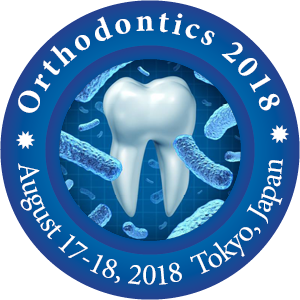
Hari Parkash
All India Institute of Medical Sciences, India
Title: Assessment of bone quality at different stages of implant healing in mandibular overdentures: An in vivo study
Biography
Biography: Hari Parkash
Abstract
McGill’s consensus recommended a two-implant supported mandibular overdenture as the basic minimum care to be delivered for the rehabilitation of edentulous patients. It is generally believed that two or four implants if splinted provide a better distribution of forces to the implants and increase the longevity of the treatment. However, unsplinted implants have also shown to give comparable results. One of the methods to analyze implant success is the bone quality around the implant. CBCT allows for an estimation of bone quality around the bone implant interface and is feasible in human studies as published in 2017 by Wuhan University, China. Thus, a study was undertaken to compare the bone quality around four endosseous implants placed in each of eight patients, immediately after placement and six months after prosthetic loading with mandibular overdenture using unsplinted Dalla bona attachments. Bone quality was assessed at four junctions of the implant length from apex to crest module at varying intervals of time using CBCT. The post implant placement scans and post implant loading scans were analyzed using the fusion tool in CBCT software to enhance the standardization of the procedure. The study concluded that four unsplinted implants using Dalla bona attachments is a favorable treatment modality for implant supported mandibular dentures. 24 implants out of 32 implants analyzed showed no significant decrease in bone quality values. In the intergroup comparison among implants placed in different positions no significant change (p>0.05) in bone quality was observed post loading.

